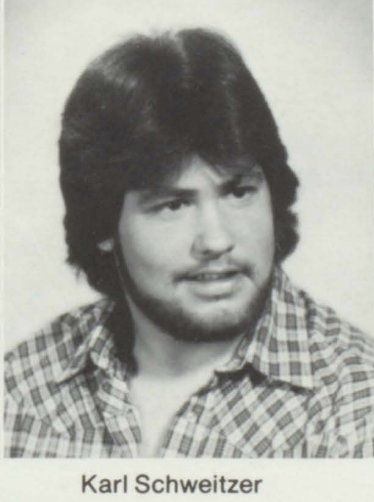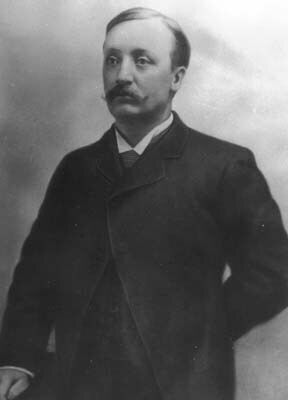Hicksville's Appointed Governor of North Dakota
 Karl Schweitzer, HHS Class of 1981
Karl Schweitzer, HHS Class of 1981
The Hicksville community has had its share of celebrities, actors, musicians and others over the years. The most famous of our residents of course is the world-renowned rock star Billy Joel. Then, there is Al Pitrelli, a guitarist who has played with the rock band Alice Cooper and most recently with the Trans-Siberian Orchestra; Denny Dias, the lead guitarist from rock band Steely Dan; The Long Island Medium, Theresa Caputo; A true funnyman, Comedian, Jackie “The Joke-Man” Martling; Professional Football player, Larry Eisenhauer from the Boston Patriots (AFL); and from the Hicksville High School Class of 1972 actor Lorraine Bracco who starred in Goodfellas, The Sopranos, and Rizzoli & Isles.
To my surprise, one of the first people from Hicksville who found fame was the Governor of the state that is known for “Liberty and union, now and forever, one and inseparable” – North Dakota.
Recently while I was researching a separate project, I came across an interesting article in the October 16, 1936 edition of the Hicksville Town Topics Leader Newspaper. The newspaper was entirely focused on celebrating the Hicksville Community’s 100th Anniversary.
Hicksville's Appointed Governor of North Dakota
Louis K. Church, Lawyer, Appointed In North Dakota In 1895.
Louis K. Church, a lawyer and a resident of Hicksville for several years, was appointed governor of the State of North Dakota by President Grover Cleveland in 1885. He served a term as head of the western state and, after his retirement, settled there permanently.  Several of the oldest residents of Hicksville remember Mr. Church as a very cultured man, a forceful and interesting orator, and a profound thinker. During the years he lived here, Mr. Church resided at the Caspar Klein farm on Woodbury Road. He had a daughter born here shortly before his appointment.
Several of the oldest residents of Hicksville remember Mr. Church as a very cultured man, a forceful and interesting orator, and a profound thinker. During the years he lived here, Mr. Church resided at the Caspar Klein farm on Woodbury Road. He had a daughter born here shortly before his appointment.
Several years ago, while on a trip through the east, she visited here to see her birthplace. She expressed pleasure and pride in her original hometown.
I continued my research to find out as much as I could about the Honorable Louis Kossuth Church.
Louis was born December 11, 1846, in Brooklyn. His parents were Rodney Smith Church and Anna Maria Jones. His father, Rodney, was a Lawyer who practiced in Massachusetts before settling in Brooklyn to challenge the corrupt politics of Tammany Hall.
Louis Kossuth Church began his education at the Hudson River Institute in Claverack, New York. He would marry Emma Jean Murphy on May 24, 1874, and they would have nine children.
After studying law at the office of Judge N. B. Moore, Church was admitted to the bar. He practiced law with Judge Moore until about 1874, when he opened his own practice. Church was a member of the New York State Assembly in 1883, 1884 and 1885 hailing from the Queens 1st Congressional District. Louis "worked closely with Republican Legislator and future president Theodore Roosevelt, continuing the fight that his father started with Tammany Hall and promoting educational reforms."
Louis and his family spent the several summers in Hicksville at the farm of Casper Klein on Woodbury Road and his second child, Emma Clarrissa was born June 26, 1883.
In 1885, President Grover Cleveland appointed Church as an associate justice of the Dakota Territorial Supreme Court for its fifth District, replacing Seward Smith, whose mental health had come into question. Because of Church's good reputation as a judge, President Cleveland appointed Louis Church as Governor of Dakota Territory. "A number of prominent Dakotans, Democrat, and Republican alike, applauded the appointment for Church, which had earned a reputation for fairness and integrity as a judge." Louis Church became Governor on February 21, 1887. He scrutinized every bill and restrained excessive spending with his veto power. He allowed the reform school to be established at Plankinton. Church opposed the division of Dakota Territory into two separate states. Governor Church and former Governors, Nehemiah G. Ordway and John L. Pennington, wanted Dakota to enter the Union as a single state.
"Among the many issues Louis Church faced as governor, the question of statehood assumed gigantic proportions." Democratic Leadership and the Northern Pacific Rail Company, and Church opposed the division of the territory into two states.
"The divisive statehood issue and the control of patronage were the crucial issues that split Democrats during Church’s tenure, resulting in the two quarreling groups-the “Home Rule" and "carpetbag” factions with the latter opposing division."
Despite his integrity, Louis Church became very unpopular as governor because of his opposition to separate statehood. When Benjamin Harrison defeated Cleveland as president, Church became a lame duck who was generally ignored by the territorial legislature. On March 4, 1889, Benjamin Harrison was inaugurated as president, and Louis Church resigned as governor on March 9, 1889.
After leaving office, Louis Church returned to practicing law, first in Huron and then in Everett, Washington. He died after developing pneumonia during a trip to Juneau, Alaska on November 23, 1897.
- Wikipedia, Louis K. Church, https://en.wikipedia.org/wiki/Louis_K._Church
- South Dakota State Historical Society (1997), The Private Letters of Governor Louis K. Church to President Grover Cleveland 1887-1889, https://www.sdhspress.com/journal/south-dakota-history-26-4/the-private-letters-of-governor-louis-k-church-to-president-grover-cleveland-1887-1889/vol-26-no-4-the-private-letters-of-governor-louis-k-church-to-president-grover-cleveland-1887-1889.pdf

